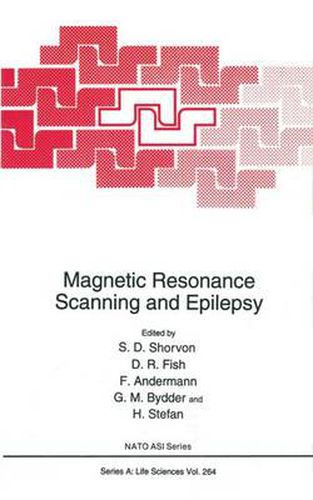Readings Newsletter
Become a Readings Member to make your shopping experience even easier.
Sign in or sign up for free!
You’re not far away from qualifying for FREE standard shipping within Australia
You’ve qualified for FREE standard shipping within Australia
The cart is loading…






This title is printed to order. This book may have been self-published. If so, we cannot guarantee the quality of the content. In the main most books will have gone through the editing process however some may not. We therefore suggest that you be aware of this before ordering this book. If in doubt check either the author or publisher’s details as we are unable to accept any returns unless they are faulty. Please contact us if you have any questions.
It was only in 1980 that the first recognisable magnetic resonance images of the human brain were published, by Moore and Holland from Nottingham University in England. There then followed a number of clinical trials of brain imaging, the most notable from the Hammersmith Hospital in London using a system designed by EMI, the original manufacturers of the first CT machines. A true revolution in medicine has ensued; in only a few years there are thousands of scanning units, and magnetic resonance imaging (MRI) has assumed a central importance in medical investigation. It is an extraordinary fact that within a few years of development, the esoteric physics of nuclear spin, angular momentum, and magnetic vector precession were harnessed to provide exquisite images of living anatomy; modem science has no greater tribute. That indisputable king of neurology and the oldest of recorded conditions, epilepsy, has not been untouched by the new technology; indeed, it is our view that the introduction of MRI of electroencephalography (EEG) in the late has been as important to epilepsy as was that 1930s. Now, for the first time, the structural and aetiological basis of the condition is susceptible to thorough investigation, and MRI can provide structural detail to parallel the functional detail of EEG. MRI has the same potential as had EEG over 50 years ago, to provide a new level of understanding of the basic mechanisms, the clinical features and the treatment of epilepsy.
$9.00 standard shipping within Australia
FREE standard shipping within Australia for orders over $100.00
Express & International shipping calculated at checkout
This title is printed to order. This book may have been self-published. If so, we cannot guarantee the quality of the content. In the main most books will have gone through the editing process however some may not. We therefore suggest that you be aware of this before ordering this book. If in doubt check either the author or publisher’s details as we are unable to accept any returns unless they are faulty. Please contact us if you have any questions.
It was only in 1980 that the first recognisable magnetic resonance images of the human brain were published, by Moore and Holland from Nottingham University in England. There then followed a number of clinical trials of brain imaging, the most notable from the Hammersmith Hospital in London using a system designed by EMI, the original manufacturers of the first CT machines. A true revolution in medicine has ensued; in only a few years there are thousands of scanning units, and magnetic resonance imaging (MRI) has assumed a central importance in medical investigation. It is an extraordinary fact that within a few years of development, the esoteric physics of nuclear spin, angular momentum, and magnetic vector precession were harnessed to provide exquisite images of living anatomy; modem science has no greater tribute. That indisputable king of neurology and the oldest of recorded conditions, epilepsy, has not been untouched by the new technology; indeed, it is our view that the introduction of MRI of electroencephalography (EEG) in the late has been as important to epilepsy as was that 1930s. Now, for the first time, the structural and aetiological basis of the condition is susceptible to thorough investigation, and MRI can provide structural detail to parallel the functional detail of EEG. MRI has the same potential as had EEG over 50 years ago, to provide a new level of understanding of the basic mechanisms, the clinical features and the treatment of epilepsy.